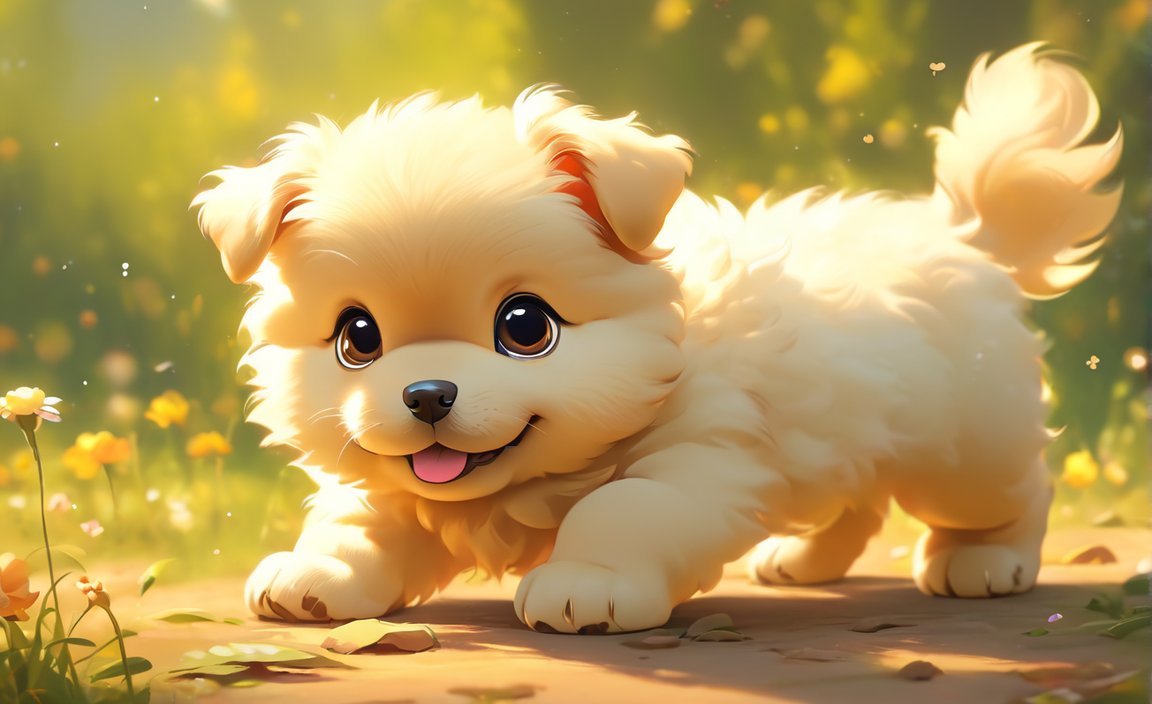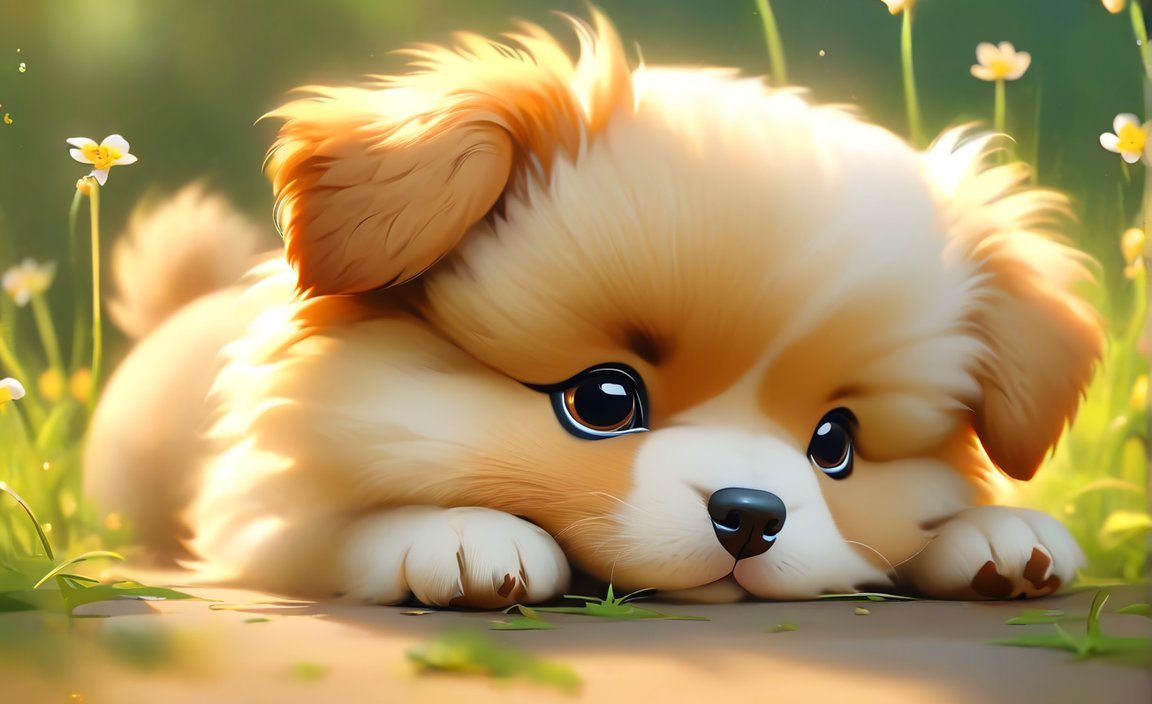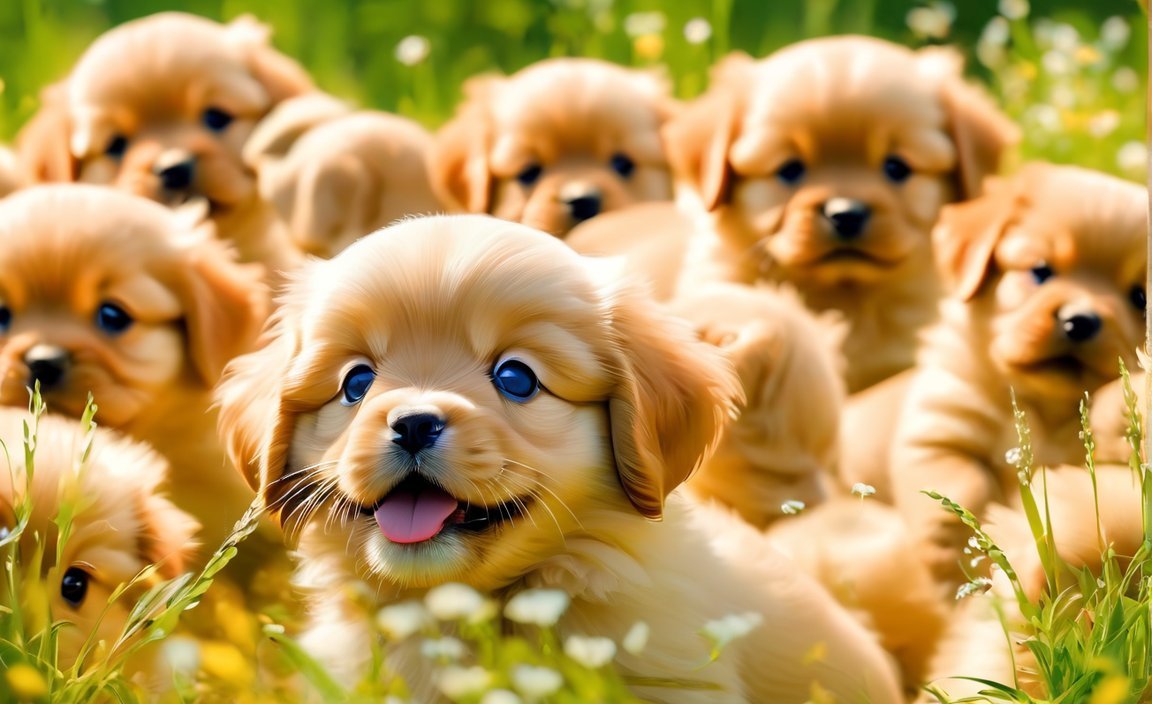Join us on a delightful expedition into the enchanting realm of puppies as we uncover 10 fascinating facts about these adorable bundles of joy. From their irresistible cuteness to their mischievous antics, we’ll explore the captivating world of puppyhood and shed light on their behavior, health, and training. Get ready to be charmed by heartwarming moments and enlightened by intriguing insights in this exciting journey. So, let’s embark on our adventure and discover the 10 fun facts about puppies that will leave you smiling and eager to learn more.

Key Takeaways:
- Puppies can be twins, just like human babies.
- Puppies have baby teeth that start coming in at 2 to 4 weeks old and fall out by 12 to 16 weeks old.
- A puppy’s coat color may change as it grows, similar to how humans’ hair color can change.
- Certain purebred dog breeds are often born by C-section due to extreme bodily proportions.
- Puppies need a lot of sleep, typically up to 15 to 20 hours a day.
- Understanding these facts about puppies can help pet owners better care for their furry companions.
10 Fun Facts About Puppies
Puppies, like human babies, also have baby teeth.
Just like human babies, puppies go through a teething process. Their baby teeth start to come in when they are around 2 to 4 weeks old, and they will eventually fall out as the puppy grows. By the time they are 12 to 16 weeks old, their permanent teeth will have replaced their baby teeth. This teething phase can make puppies chew on everything in sight, so it’s important to provide them with appropriate chew toys to alleviate discomfort.
A puppy’s coat color may change as they grow.
Just as humans’ hair color can change over time, a puppy’s coat color may also undergo changes as they mature. Some puppies are born with a different coat color than what they will have as adults. For example, a black Labrador Retriever puppy may end up having a lighter coat color when they reach adulthood. It’s fascinating to witness these color transformations as puppies develop into their adult selves.
Certain dog breeds are usually born by C-section.
Due to extreme bodily proportions or other reproductive issues, certain purebred dog breeds are commonly delivered by Cesarean section. These procedures ensure the safety of both the mother and the puppies. Breeds such as Bulldogs, Boston Terriers, and French Bulldogs often require C-section deliveries because of their unique body structures. Veterinary professionals carefully plan and perform these surgeries to ensure successful births.
Puppies take a lot of naps.
If you’ve ever observed a puppy, you may have noticed how frequently they nap. Puppies have an incredible amount of energy, but they also require a significant amount of sleep to support their rapid growth and development. On average, puppies sleep up to 15 to 20 hours a day. It’s important to respect their nap time and create a quiet and comfortable environment for them to rest undisturbed.
Puppies are social learners.
Puppies are incredibly social creatures and learn best through observation and interaction with their environment and other dogs. They rely on their littermates and mother to learn important social skills, such as bite inhibition and body language. This is why it’s crucial for puppies to have positive interactions with other dogs and humans during the critical socialization period, which occurs between 3 to 14 weeks of age. Proper socialization sets the foundation for a well-rounded and confident dog.
Puppies have a highly developed sense of smell.
A puppy’s sense of smell is much more powerful and refined than that of humans. In fact, puppies are born with a sense of smell that is already more advanced than ours. Their incredible olfactory abilities enable them to detect scents, track trails, and even sniff out certain medical conditions or substances. It’s no wonder that many dogs are employed as search and rescue dogs or as working dogs in tasks that involve scent detection.
Puppies have a better night vision than humans.
While puppies might not have the sharp color vision that humans possess, they excel in low-light conditions. Puppies have a reflective layer behind their retinas called the tapetum lucidum, which enhances their night vision. This adaptation allows them to see better in dim lighting or during nighttime activities. So if you’ve ever noticed your puppy confidently navigating the room in the dark, it’s because of their superior night vision.
Puppies communicate through body language.
Puppies cannot speak our language, but they have their own unique way of communicating. They rely heavily on body language to convey their emotions and intentions. Understanding a puppy’s body language can help us interpret their needs and prevent any potential conflicts. From wagging tails to flattened ears or even growls, learning to “speak puppy” can enhance the bond between humans and their furry friends.
Puppies are born with closed ear canals.
At birth, puppies have closed ear canals that don’t fully open until they are around 2 weeks old. This means that in the early weeks of their lives, puppies primarily rely on their sense of touch and smell to navigate the world. As their hearing develops, they become more responsive to sound and begin to explore their auditory environment. It’s wonderful to witness the transformation as puppies start to react to the sound of their humans’ voices.
Puppies are incredibly adaptable.
Puppies are naturally flexible and adaptable to various environments and situations. They have a remarkable ability to adjust to new surroundings, people, and routines. Whether you live in a bustling city or a quiet countryside, puppies can quickly adapt and thrive in different environments. This adaptability makes them wonderful companions for individuals and families with diverse lifestyles.
These 10 fun facts about puppies provide fascinating insights into their development, behavior, and characteristics. From their teething process to coat color transformations and their remarkable adaptability, puppies continue to captivate our hearts. Understanding these facts can help pet owners better care for their furry companions and deepen the bond they share with these lovable creatures. So the next time you’re with a puppy, remember these intriguing facts and appreciate the wonders of puppyhood.
If you’re curious about the fascinating world of animal ultrasound technicians, check out these 10 facts about animal ultrasound technicians. You’ll be amazed at the crucial role they play in diagnosing and treating our beloved pets. To learn more, click here.
Have you ever wondered about the incredible abilities of raptors? Discover 10 facts about raptors that will astound you. From their remarkable hunting skills to their impressive aerial acrobatics, these birds of prey are truly awe-inspiring. Delve deeper by clicking here.
Puppies Go Through a Crucial Socialization Period
During a puppy’s first three months of life, they undergo a critical socialization period that significantly influences their future personality and behavior as an adult dog. Socialization involves introducing puppies to various people, places, and situations in a positive and gentle manner, which is vital for their overall well-being and helps them develop into well-adjusted, confident, and happy dogs.
Importance of Socializing Your Puppy
What makes socialization so crucial for puppies? Let’s explore some essential points:
- Positive Exposure to the World: Proper socialization allows puppies to become familiar with different sights, sounds, and smells, helping them feel comfortable and at ease in various environments.
- Long-Term Behavior and Temperament: Socialization plays a significant role in shaping a puppy’s long-term behavior and temperament. By exposing puppies to positive experiences during this impressionable period, we can help them develop into friendly and sociable dogs.
- Preventing Behavior Issues and Fears: Early socialization can prevent behavior problems and fears in dogs. When puppies are brought up in a nurturing and social environment, they are less likely to develop anxiety or aggression issues later in life.
- Increased Quality of Life: Puppies that are not properly socialized tend to be more anxious and unsure, leading to behavioral problems and a decreased overall quality of life.
Citations:
– American Kennel Club
– PDSA
How to Socialize Your Puppy
Now that we understand the importance of socialization, let’s explore how to facilitate this crucial process:
- Start at Home: Socialization begins with the breeder, but it’s essential to continue the process at home. Create a positive and nurturing environment where your puppy can explore and experience new things.
- Expose to Variety: Introduce your puppy to different people, places, and situations. This exposure helps them become accustomed to a wide range of experiences, making them more adaptable and resilient.
- Puppy Classes and Play Dates: Enrolling your puppy in well-run puppy classes or arranging play dates with other dogs can provide valuable socialization opportunities. It allows them to interact and learn how to communicate effectively with their furry friends.
- Positive Reinforcement: Use positive reinforcement techniques such as treats and praise to create positive associations with new experiences. This builds confidence and encourages your puppy to view the world in a positive light.
- Timing is Key: The most critical socialization period for puppies is between 3 to 12 weeks of age. This window is when they are most receptive to new experiences and have a natural curiosity to explore the world around them.
Citations:
– American Kennel Club
– PetMD
Socialization Period for Older Dogs
While socialization is particularly crucial during a puppy’s early months, what about older dogs? Can they still benefit from socialization? The answer is a resounding yes! Although it may require more patience and effort, older dogs can still adapt and learn to navigate new situations. Gradual exposure to new experiences and positive reinforcement can help older dogs adjust and overcome any fears or anxieties they may have developed.
Key Takeaways:
- Puppies go through a crucial socialization period during their first three months of life.
- Socialization is vital for shaping a puppy’s future personality and behavior.
- Proper socialization prevents behavior problems and fears in dogs, leading to a higher quality of life.
- Start socializing your puppy at home and gradually expose them to various people, places, and situations.
- Enrolling in puppy classes or arranging play dates with other dogs can aid in socialization.
- Positive reinforcement is key to creating positive associations with new experiences.
- The best time to socialize a puppy is between 3 to 12 weeks of age.
- Older dogs can still benefit from socialization but may require more patience and effort.
Citations:
– The Village Vets
– Best Friends Animal Society
– Heart + Paw
Puppies have sharp baby teeth that are meant for biting
Puppy teeth are sharp for a few important reasons. Firstly, these little teeth aid in the weaning process from their mother’s milk. Puppies are born without any teeth to ensure safe breastfeeding, but around three weeks old, their first set of sharp but temporary teeth begin to grow. These milk teeth, also known as deciduous teeth, help them transition from milk to solid food. By six weeks old, puppies have a full set of 28 sharp teeth that enable them to bite while their jaws are still developing.
Another reason why puppy teeth are sharp is to teach them bite inhibition. During play, puppies may nip or bite too hard. It’s crucial to let them know that their bites are painful. By letting out a loud “Yip!”, “Ow!”, or “Ouch!”, we can communicate to puppies that their biting behavior is not acceptable. Consistently reacting this way helps them learn to control the force of their bites and develop bite inhibition.
It’s important to note that puppy teeth are temporary and will eventually be replaced by adult teeth. These baby teeth typically last for about four months, starting when puppies are two to three weeks old. Around four to five months of age, the baby teeth start falling out, making way for less sharp adult teeth.
To care for puppy teeth, it’s crucial to provide appropriate chew toys during the teething stage. Teething can be uncomfortable for puppies, and they may try to soothe their gums by chewing on anything they can find. Offering them suitable toys helps redirect their chewing behavior and protects your belongings from damage.
Sources:
– wikiHow – Why Are Puppy Teeth So Sharp?
– DoggySaurus – Why Are Puppy Teeth So Sharp? (+ How Long For)
Key Takeaways:
- Puppy teeth are sharp to aid in the weaning process from their mother’s milk.
- They help puppies learn bite inhibition and control the force of their bites.
- Puppy teeth are temporary and will be replaced by adult teeth.
- Providing appropriate chew toys is important for teething puppies.
Puppies are Highly Adaptable and Can Learn New Things Quickly
Puppies are fascinating creatures that possess an incredible ability to adapt and learn at a rapid pace. Their curiosity and eagerness to explore the world around them make them excellent learners. Let’s embark on a journey through the adorable and mischievous world of puppies as we discover 10 fun facts about them.
Fact 1: Socialization is Key for Puppy Development
Puppies quickly learn how to adapt through interacting with their littermates and receiving guidance from their mothers. Proper socialization is crucial for their development. It is during this period that they learn valuable lessons about communication, boundaries, and appropriate behaviors. By exposing them to various people, places, and situations, we help shape their future personalities and ensure they grow into well-rounded, confident dogs. Proper socialization prevents behavior problems and fears, leading to a higher quality of life for our furry friends. So, why not start socializing your puppy right away? It’s never too early to begin their learning journey.
Fact 2: The Wonder of Puppy Development
Puppies are born helpless, deaf, blind, and without teeth. But don’t worry, their amazing growth and development will astonish you. Their first sense to develop is touch, allowing them to navigate their surroundings and find comfort in the warmth of their mother and littermates. Between the ages of 10 and 14 days, their eyes open, revealing a whole new world. Gradually, they start to understand body language and hand gestures, making it easier for them to communicate their needs and desires.
Fact 3: In the World of Puppies, Colors Can Change
When it comes to puppies, even their coat colors can surprise us. Some puppies are born with one coat color, only to have it change as they mature. This fascinating phenomenon is something not many people know about. So, if you’re planning to bring home a puppy, keep in mind that their appearance might transform over time. It’s like having a little chameleon by your side!
Fact 4: Born to Enjoy “Baby Talk”
Did you know that puppies actually enjoy “baby talk”? Yes, it’s true! They are more receptive to high-pitched, exaggerated tones compared to adult dogs. So, next time you find yourself talking in a sweet and babbling manner to your puppy, know that you’re actually on the right track. It brings them comfort and creates a special bond between you and your fur baby.
Fact 5: Dalmatians: Born Without Spots
Dalmatian puppies are famous for their spots, but guess what? They are actually born without them. The spots develop over time as they grow older. This unique feature makes Dalmatians even more captivating. It’s like watching a beautiful masterpiece come to life!
Fact 6: Nurturing Newborn Puppies
Just like human babies, newborn puppies are born undeveloped, blind, and deaf, relying entirely on their parents for care and feeding. During these early days, the mother provides them with the love and nourishment they need for survival. It’s a miraculous process to witness, where the mother’s instincts kick in, ensuring the well-being of her little ones.
Fact 7: Puppy Teeth: A Journey of Transition
As puppies grow, they go through a series of remarkable transitions. At around 2 to 4 weeks old, their baby teeth start coming in, enabling them to explore solid foods. These temporary teeth serve multiple purposes, including teaching puppies bite inhibition and helping them transition from their mother’s milk to solid food. So, when you see your puppy nibbling on things, remember that they’re on an exciting journey of discovery and learning.
Key Takeaways:
- Puppies learn through socialization, interacting with their littermates, and guidance from their mothers.
- The early stages of a puppy’s life are filled with remarkable development, from touch to sight and understanding gestures.
- Coat colors of puppies may change as they mature, leading to surprising transformations.
- Puppies enjoy “baby talk” and find comfort in high-pitched, exaggerated tones.
- Dalmatian puppies are born without spots, and their spots develop over time.
- Newborn puppies are dependent on their parents for care and feeding.
- Puppy teeth help with the weaning process and teach bite inhibition.
- Transition from milk to solid food is aided by temporary puppy teeth, making it an exciting learning experience.
Citations:
– PuppySimply
– Kidoneo

FAQ
Q1: Do puppies have baby teeth?
A1: Yes, puppies, like human babies, have baby teeth. These teeth start to come in when the puppy is 2 to 4 weeks old and eventually fall out by the time they are 12 to 16 weeks old.
Q2: Can a puppy’s coat color change as they grow?
A2: Yes, a puppy’s coat color may change as they grow, just like how humans’ hair color can change with age.
Q3: Are certain dog breeds usually born by C-section?
A3: Yes, due to extreme bodily proportions, certain purebred dog breeds are more likely to be born by C-section.
Q4: How many hours a day do puppies sleep?
A4: Puppies require a significant amount of sleep, typically up to 15 to 20 hours a day. It is important to avoid disturbing napping puppies.
Q5: Why is socializing a puppy important?
A5: Socializing a puppy is important because it helps shape their future personality and behavior as an adult dog. Proper socialization allows puppies to become well-adjusted, confident, and happy dogs, while preventing behavior problems and fears.
















